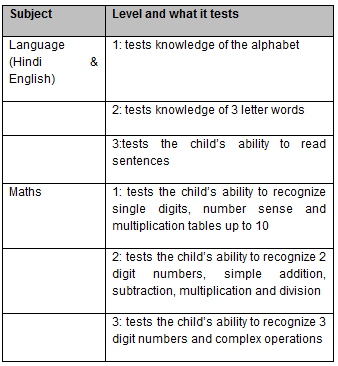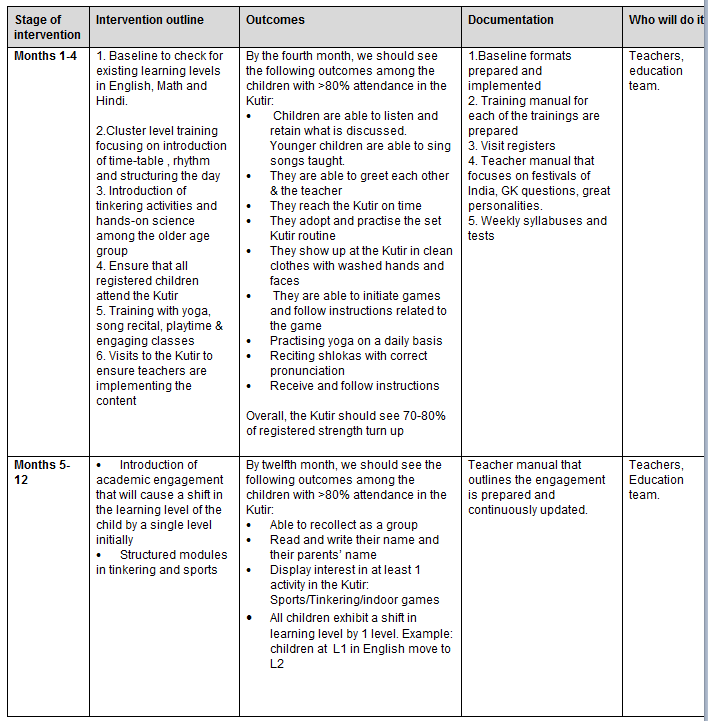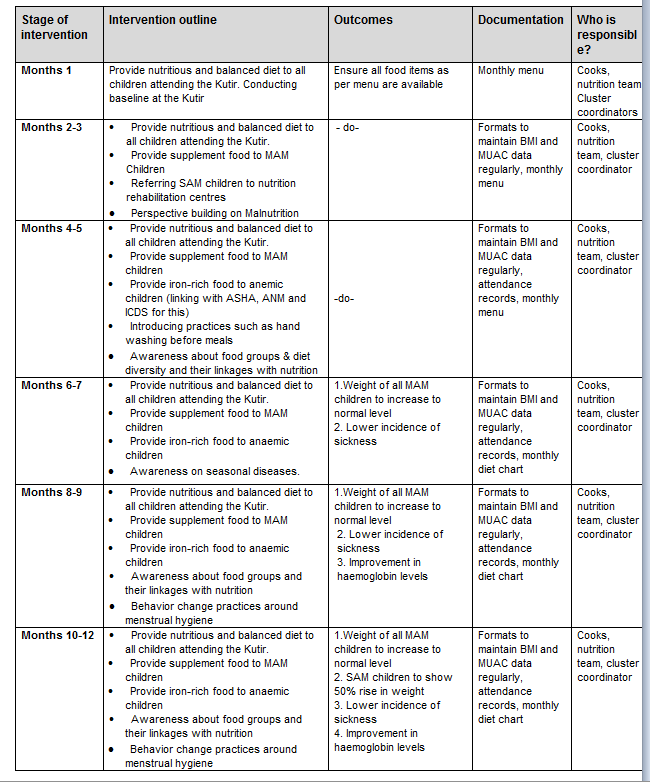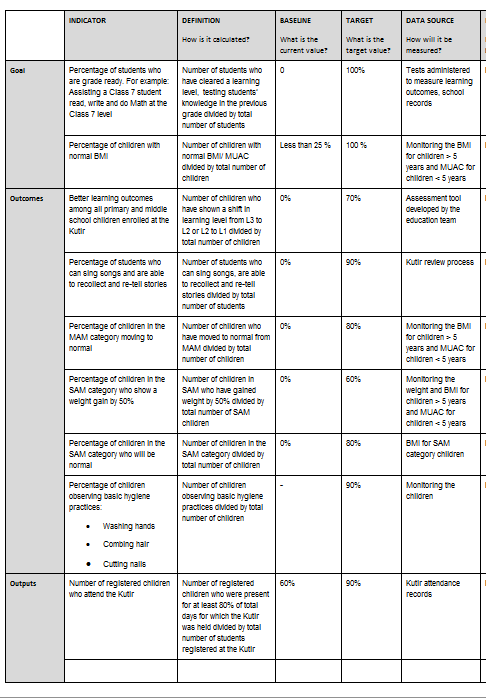Before opening a new Kutir, our team visits the village. Once this is done, the Panchayat sends a letter, inviting the Parivaar team to set up the Kutir. The village community has to invite us and offer a venue free. Usually it is somebody’s house (often a newly built cottage under the PM Awas Yojana), Panchayat building, community hall, school in its non-functioning hours, or even a shed / godown. Thus we do not incur any infrastructure costs for this. A person is appointed to conduct a survey and register all eligible children. Typically, there are 70-120 registered children in every Kutir. Following this, the set-up material is sent to the village and the Kutir begins functioning.
Manpower Deployment :
All the Kutirs have been classified as per clusters.Every cluster roughly has 5-7 Kutirs and has 2 cluster coordinators. Every Kutir has a staff of at least 6 persons – 3 cooks and 3 teachers. The cooks are mostly local womenfolk from the village itself (the mothers / relatives of the kids attending the Kutirs). Of these, 1 of the cooks is the nutrition anchor and 1 of the teachers is a dedicated pre-primary teacher. We have a total staff of more than 700 teachers and cooks, 15 central staff (including anchors persons in child development, education and nutrition who undertake continuous Monitoring and Evaluation) and 40 cluster coordinators.
Strategy :
Children between ages 4 and 14 years attend our Kutirs. This is a highly heterogeneous group of learners and we need to equip our teachers well to enable them to teach this group effectively. Our teachers also need well-defined structures and continuous handholding and so the major focus of our education team right now is to build and implement such structures.
The Kutir curriculum apart from school-level academics comprises the following elements:
Once every two months, we plan to organize competitions (debating, quizzing, sports, elocution, and science exhibition) that will help the children consolidate their learning from the Kutir.
Typically, we conduct the baseline 1 month after the Kutir opens. This period is necessary for the Kutir to achieve operational maturity. The educational intervention begins after the baseline with a training of the Kutir teachers. The baseline has been designed as follows:

Program progress :
The following table will give you an overview of all the educational inputs that go into running a single Kutir.

Strategy :
Our basic strategy for this component of the program hinges on timely identification of malnourished children. This will help us to correct the problem by providing a well-balanced diet and in case of very severe malnourishment; we will also refer cases to the Nutrition Rehabilitation Centres, setup to tackle such cases. We are creating monthly dietary plans based on the diet needs of the Kutirs in the region as well as the food available. Liasoning with Anganwadi, local health authorities such as ANM, ASHA and CHC/PHC are an integral part of the effort. In addition to this, the plan is to work closely with the operations team to bring a lasting transformation in the cropping pattern and thereby influence food consumption in the region.
The nutrition baseline is conducted using the accepted parameters of BMI for children over the age of 5 years and mid-upper arm circumference (MUAC).
Program progress :
The following table will give you an overview of all the nutritional inputs that go into running a singleThe nutrition baseline is conducted using the accepted parameters of BMI for children over the age of 5 years and mid-upper arm circumference (MUAC).
Single Kutir :

Monitoring and evaluation :

© 2021 All rights reserved